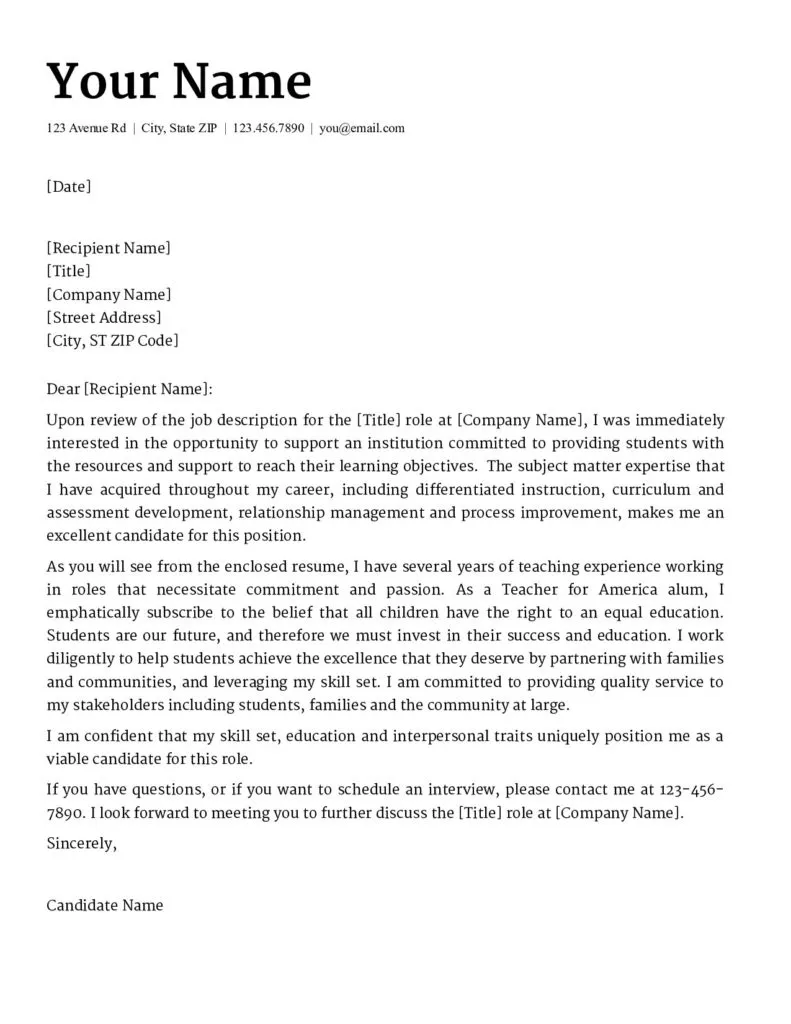Crafting a Teacher Resume Overview
Your teacher resume and cover letter are your first introductions to potential employers. They must be meticulously crafted to showcase your qualifications, experience, and passion for education. A well-structured resume highlights your achievements, skills, and teaching philosophy. The cover letter serves as a personalized narrative, allowing you to connect with the hiring manager and demonstrate why you are the ideal candidate. Both documents must be error-free, visually appealing, and tailored to the specific job requirements. This guide provides a comprehensive overview and detailed strategies for creating a compelling teacher resume and cover letter that will help you land your dream job.
Understanding the Core Components
A strong teacher resume consists of several essential components. These sections work together to provide a complete picture of your professional background and capabilities. Each element should be carefully considered and thoughtfully presented to maximize its impact. Paying attention to details, such as formatting, content, and clarity, is essential for creating a resume that stands out from the competition and effectively communicates your value to potential employers. Let’s explore each of these vital components.
Contact Information

Begin with your full name, professional title (e.g., Elementary Teacher, High School Math Teacher), phone number, email address, and optionally, your LinkedIn profile URL. Ensure your email address is professional and that your voicemail message is also professional. Make it easy for employers to contact you by providing all necessary details at the top of your resume.
Summary or Objective
Include a concise summary (for experienced teachers) or an objective statement (for new graduates or career changers). The summary should highlight your key skills, years of experience, and teaching philosophy. The objective should clearly state your career goals and what you hope to achieve in the role. Keep it brief and focus on what you can offer the school.
Education Section
List your degrees, certifications, and any relevant coursework. Include the name of the institution, degree earned, graduation date, and GPA (if high). Highlight any specializations, honors, or awards. If you have multiple degrees, list them in reverse chronological order. If you are a new teacher, emphasize your education and any practicum experiences.
Experience Section
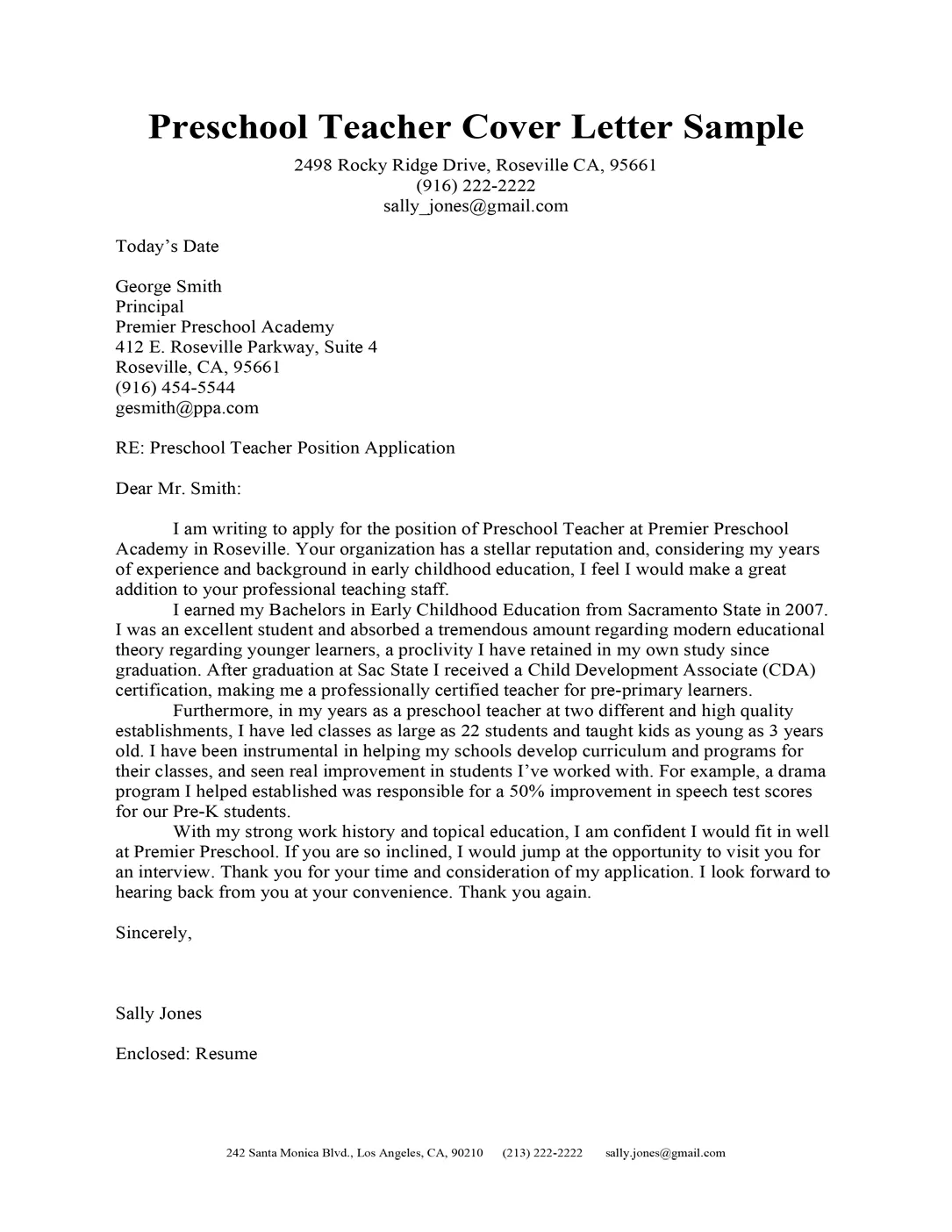
Detail your teaching experience in reverse chronological order. Include the school name, location, dates of employment, and a bulleted list of responsibilities and accomplishments. Focus on quantifiable results whenever possible (e.g., “Increased student test scores by 15%”). Use action verbs to describe your duties and achievements. Tailor this section to match the job description.
Skills Section
Create a dedicated section for your skills. This includes both hard skills (e.g., curriculum development, lesson planning, classroom management) and soft skills (e.g., communication, collaboration, leadership). List skills relevant to the teaching position. Categorize your skills for clarity (e.g., Teaching Methods, Technology Skills, Classroom Management).
Highlighting Teaching Experience
Your teaching experience section is the most critical part of your resume. It provides potential employers with a clear picture of your abilities and accomplishments. Use this section to showcase your teaching style, classroom management skills, and commitment to student success. Provide specific examples of how you have made a positive impact on students’ learning experiences and overall development. This is where you bring your resume to life.
Quantifying Accomplishments
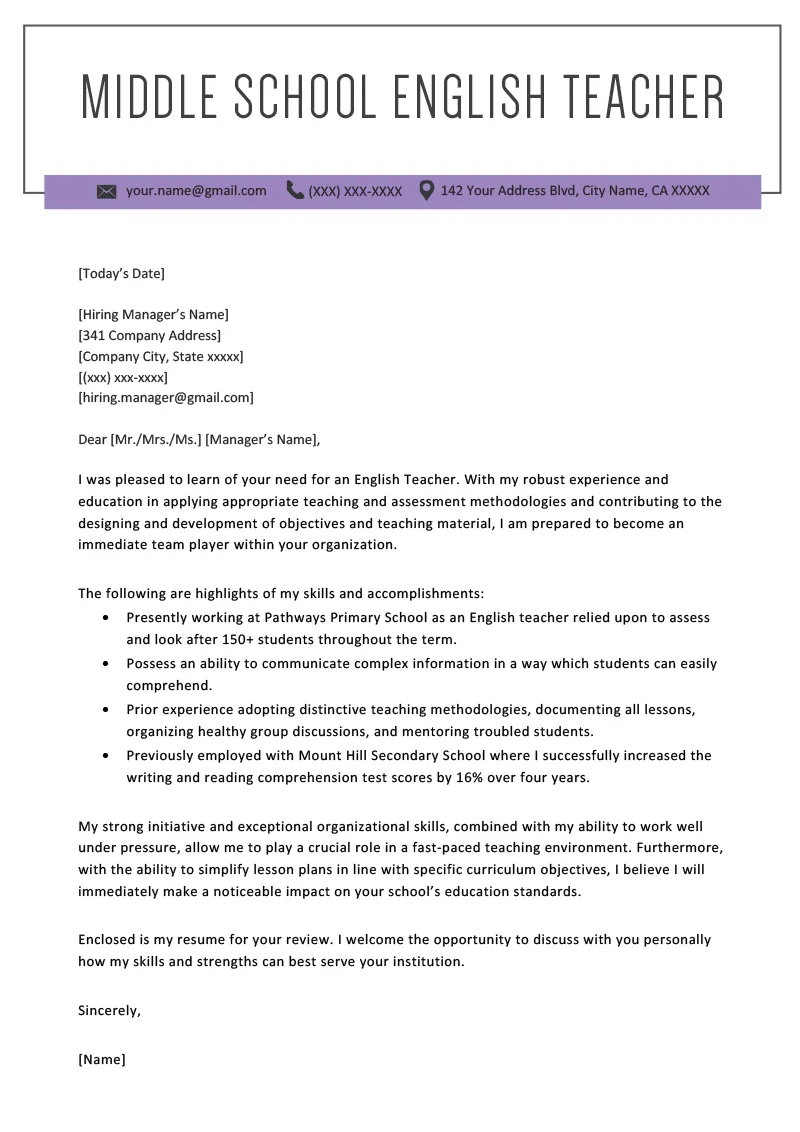
Whenever possible, use numbers and data to quantify your accomplishments. For example, “Improved student reading scores by 20%” or “Managed a classroom of 25 students with minimal disciplinary issues.” Quantifiable achievements make your experience more tangible and demonstrate your effectiveness. They provide concrete evidence of your abilities and the value you bring to the role. Use data to show your impact.
Using Action Verbs
Start each bullet point in your experience section with strong action verbs. Examples include “Developed,” “Implemented,” “Managed,” “Collaborated,” and “Assessed.” Action verbs make your statements more dynamic and engaging. They instantly communicate what you have done. Use a variety of action verbs to keep your descriptions interesting and to showcase the breadth of your skills and experience.
Tailoring Your Resume
Each teaching position is unique, and your resume should reflect that. Tailor your resume to match the specific requirements and keywords in the job description. This targeted approach significantly increases your chances of getting an interview. Customizing your resume shows that you have carefully considered the role and are genuinely interested in the position. Taking the extra time to customize your resume will truly set you apart.
Matching the Job Description
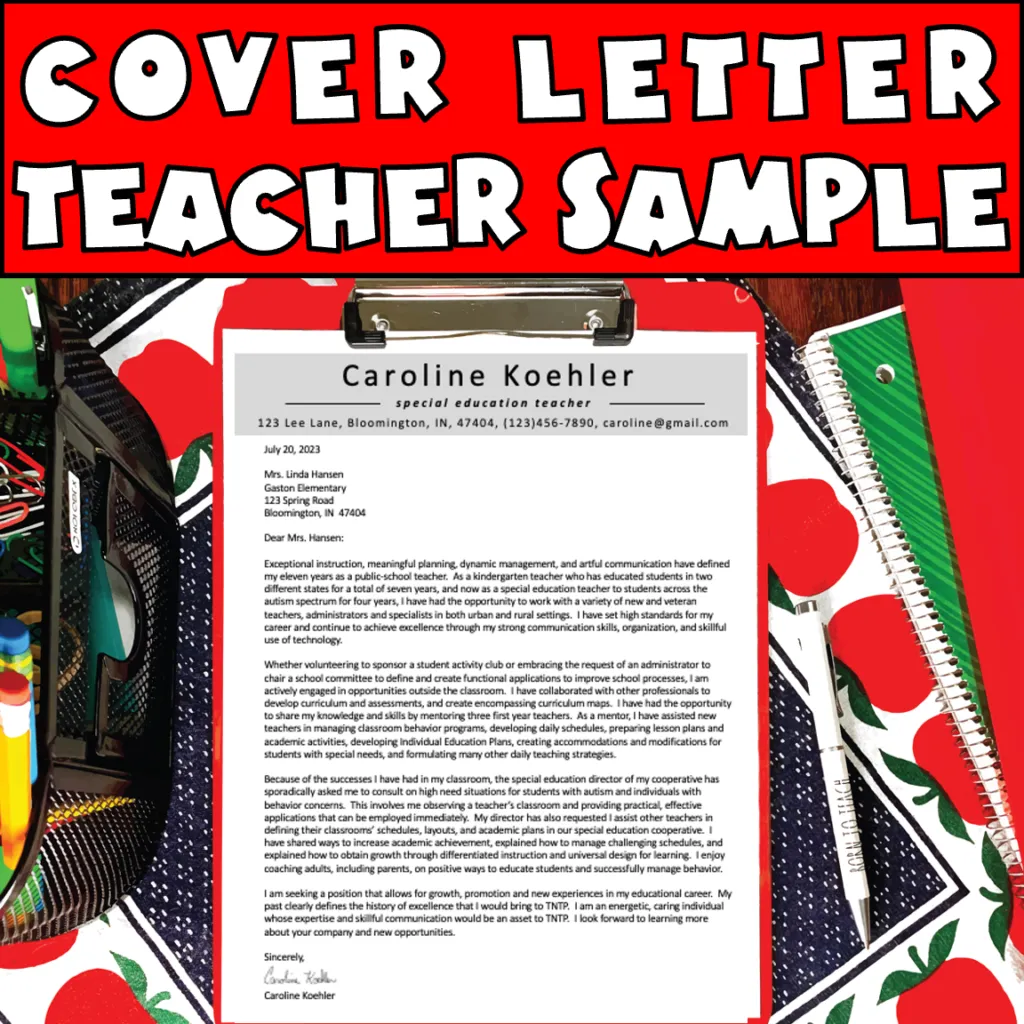
Carefully read the job description and identify the key skills, experience, and qualifications the employer is seeking. Then, highlight your relevant experience and skills by using the same keywords and phrases in your resume. Customize your resume to align with the specific needs of each position. This demonstrates that you have the skills and experience that the hiring manager is looking for.
Keywords and ATS Systems
Many schools use Applicant Tracking Systems (ATS) to screen resumes. These systems scan resumes for specific keywords. To get past the ATS, incorporate relevant keywords from the job description into your resume. Place these keywords strategically throughout your resume, especially in your skills section and experience descriptions. A well-optimized resume will increase the likelihood of it being noticed by the hiring manager.
Writing a Compelling Cover Letter
A well-written cover letter is an essential part of your job application. It allows you to introduce yourself, express your enthusiasm for the position, and elaborate on your qualifications in more detail than your resume. A cover letter gives you the opportunity to personalize your application and make a strong first impression on the hiring manager. It should complement your resume and showcase your unique skills and personality.
The Importance of a Cover Letter
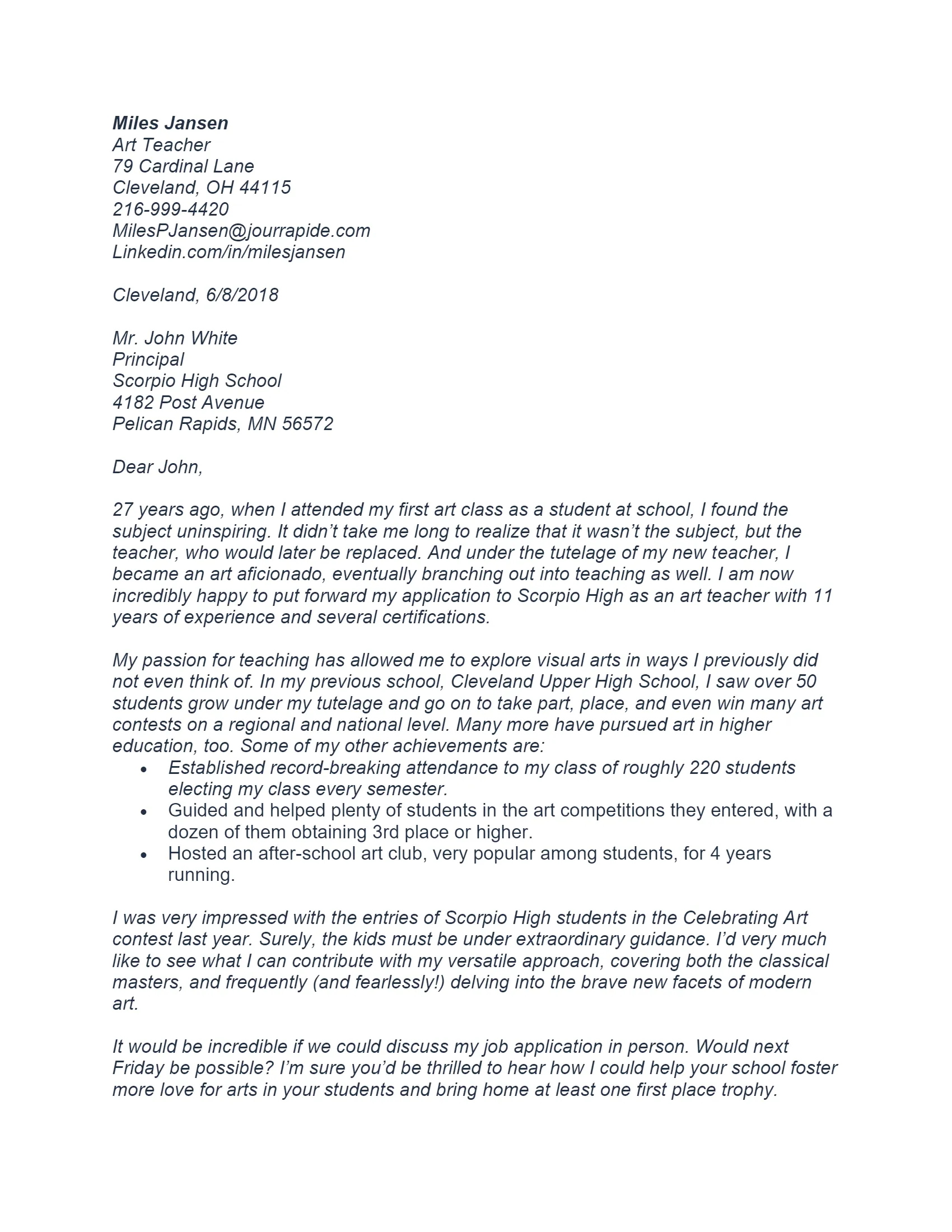
Your cover letter is an opportunity to tell your story and connect with the hiring manager on a personal level. It allows you to explain why you are interested in the specific school or district and what you can bring to the role. A cover letter also demonstrates your communication skills and professionalism. It provides context and helps the employer understand your resume more effectively. In short, it can be the deciding factor between getting an interview and not getting one.
Structuring Your Cover Letter
A clear and well-structured cover letter is easy to read and leaves a positive impression. Follow a standard format that includes an opening paragraph, body paragraphs, and a closing paragraph. Each section has a specific purpose, and together, they create a cohesive narrative that highlights your qualifications and enthusiasm. A well-organized cover letter ensures your key points are easily understood.
Opening Paragraph
Start with a strong opening that captures the reader’s attention. State the position you are applying for and where you saw the job posting. Briefly explain why you are interested in the role and the school or district. A compelling opening sets the tone for the rest of the letter and encourages the reader to continue reading.
Body Paragraphs
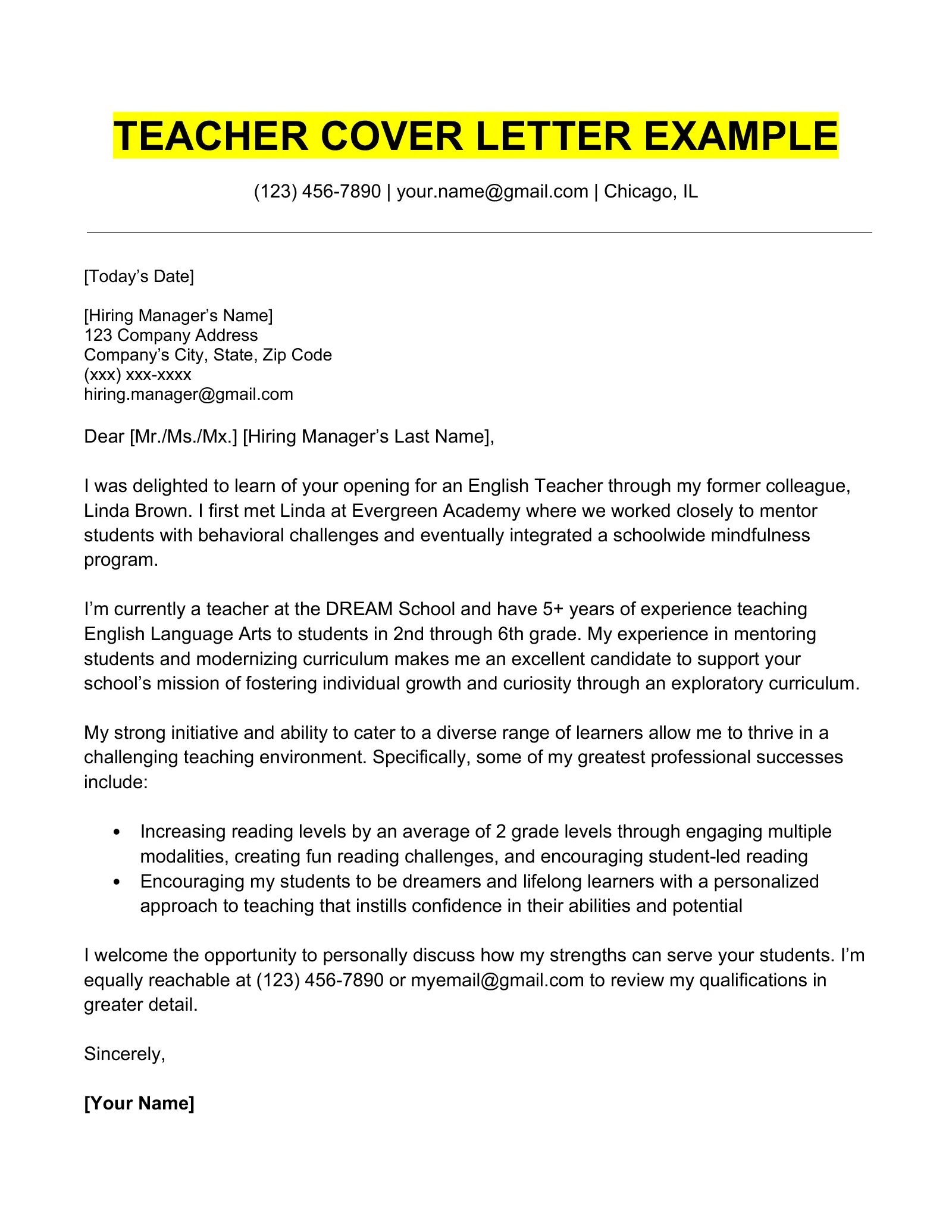
The body paragraphs should elaborate on your qualifications and skills. Provide specific examples of your achievements and how they align with the job requirements. Tailor your examples to the specific needs of the school or district. Use this section to demonstrate your passion for teaching and your understanding of the challenges and opportunities in the role. Each paragraph should focus on a different aspect of your experience and qualifications.
Closing Paragraph
Summarize your interest in the position and reiterate your qualifications. Express your enthusiasm for the opportunity and thank the reader for their time and consideration. Include a call to action, such as stating your availability for an interview and how they can contact you. A strong closing paragraph leaves a lasting impression and reinforces your desire for the position.
Cover Letter Content Best Practices
Writing an effective cover letter requires careful attention to content and style. Focus on highlighting your relevant experience, showcasing your skills, and demonstrating your value to the school. Your cover letter is your opportunity to shine. Use your cover letter to demonstrate what makes you an ideal candidate.
Expressing Passion for Teaching
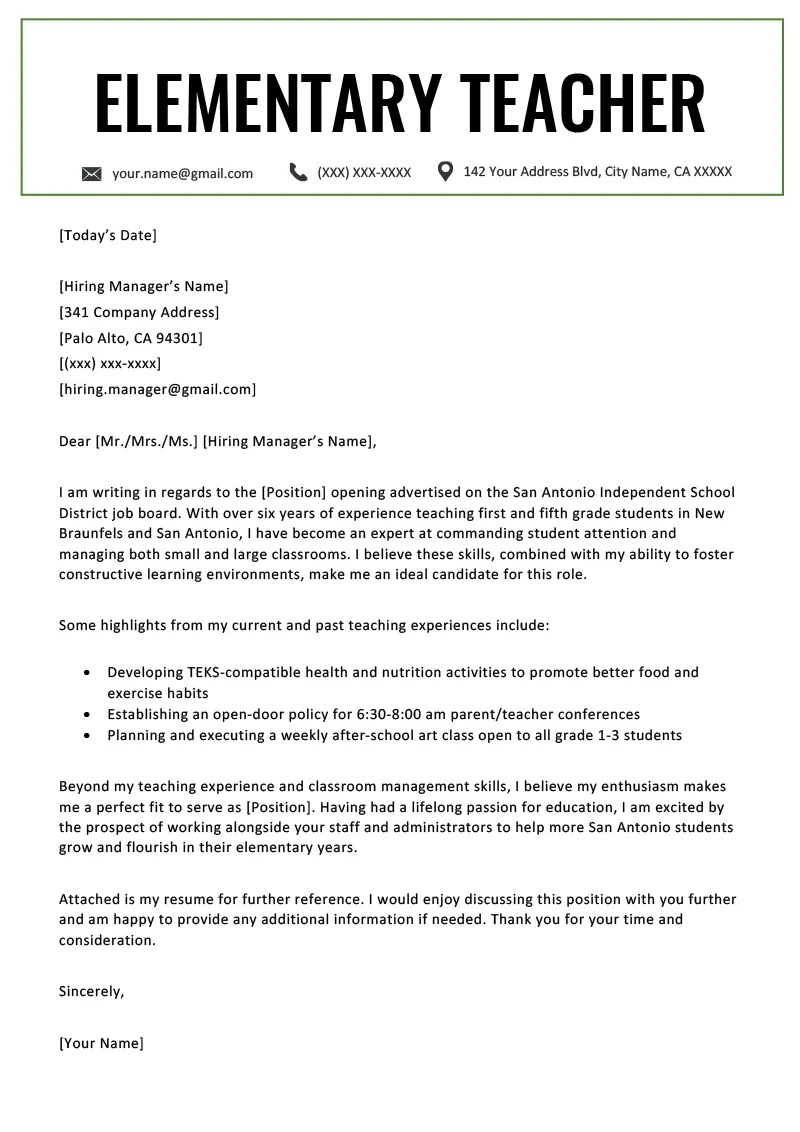
Show your passion for teaching by expressing your enthusiasm for working with students, creating a positive learning environment, and contributing to the school community. Describe your teaching philosophy and what motivates you as an educator. This is where you express your genuine love of teaching.
Showcasing Your Skills and Experience
Provide specific examples of your skills and experience. Use the STAR method (Situation, Task, Action, Result) to describe your accomplishments and demonstrate your impact. Mention any special training, certifications, or skills that are relevant to the position. Show how you have used your skills to achieve positive outcomes in your previous roles. Provide evidence.
Demonstrating Your Value
Explain what you can bring to the school and how you can contribute to its mission and goals. Highlight your understanding of the school’s values and how your skills align with them. Explain how you can make a positive impact on student learning and overall school success. Show how you can solve problems. Show the value you offer.
Formatting and Proofreading
Attention to detail is crucial when creating a professional resume and cover letter. Proper formatting and thorough proofreading can make the difference between a successful application and one that is overlooked. Make sure that your documents are visually appealing and free of errors. Presenting your work in a professional manner demonstrates your commitment to excellence and attention to detail.
Resume Formatting
Use a clean, easy-to-read font (e.g., Times New Roman, Arial, Calibri) and a consistent font size (11 or 12 points). Use clear headings and subheadings to organize your content. Keep your resume concise – aim for one or two pages. Use ample white space to make it visually appealing. Ensure the formatting is consistent throughout the document. Save your resume as a PDF to preserve its formatting.
Cover Letter Formatting
Format your cover letter to match your resume. Use the same font and font size. Use standard business letter format (date, recipient’s name and address, salutation, body, closing, and signature). Keep the letter concise and focused. Make sure the layout is neat and easy to read. Ensure the format is professional.
Proofreading and Editing
Thoroughly proofread your resume and cover letter for any grammatical errors, typos, or inconsistencies. Use spell-check and grammar-check tools, but don’t rely on them entirely. Have a friend, colleague, or career counselor review your documents for feedback. Pay attention to the tone and style. Make sure everything is clear, concise, and professional. Proofreading ensures that you make the best first impression.
